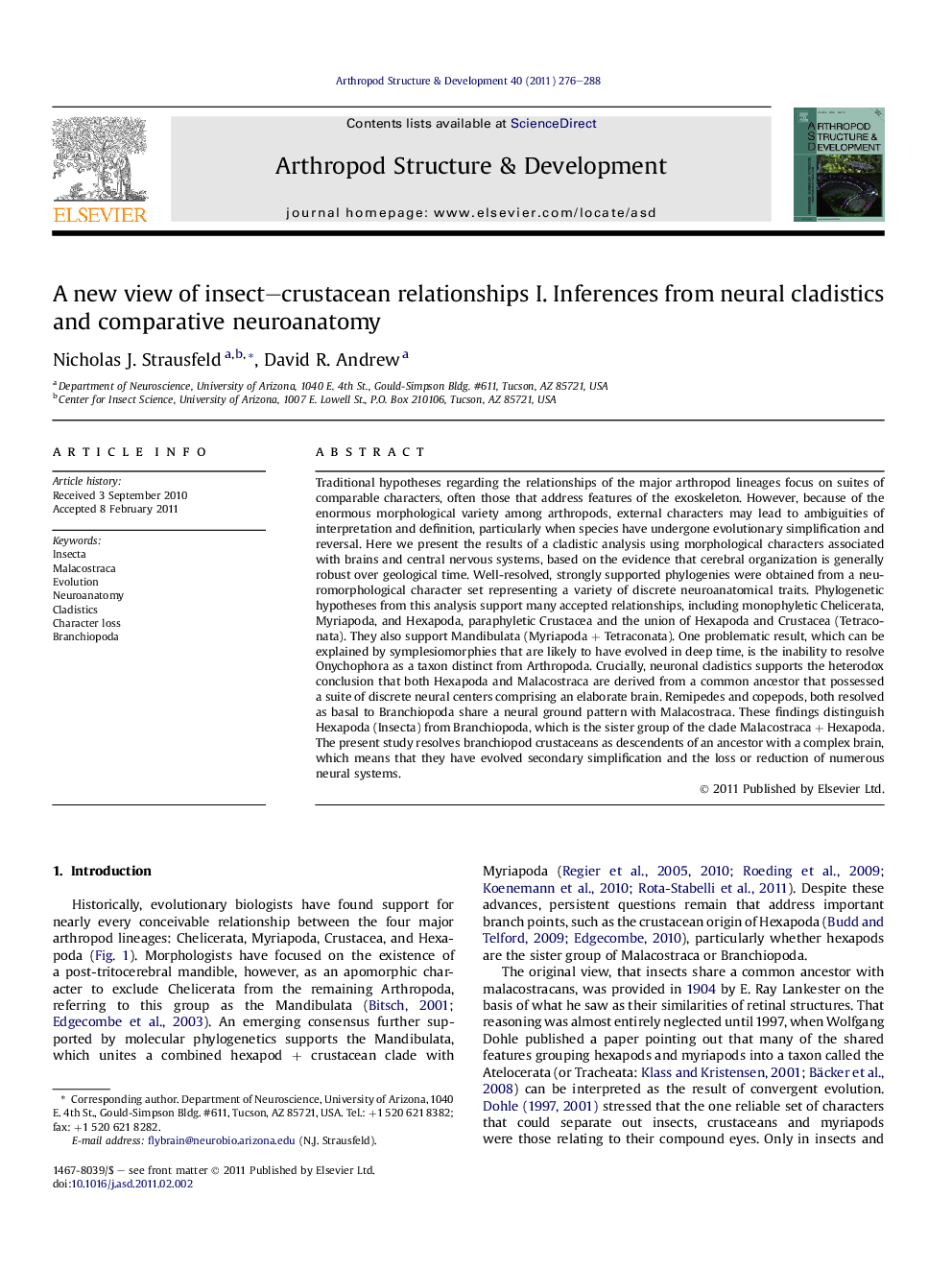| Article ID | Journal | Published Year | Pages | File Type |
|---|---|---|---|---|
| 2778785 | Arthropod Structure & Development | 2011 | 13 Pages |
Traditional hypotheses regarding the relationships of the major arthropod lineages focus on suites of comparable characters, often those that address features of the exoskeleton. However, because of the enormous morphological variety among arthropods, external characters may lead to ambiguities of interpretation and definition, particularly when species have undergone evolutionary simplification and reversal. Here we present the results of a cladistic analysis using morphological characters associated with brains and central nervous systems, based on the evidence that cerebral organization is generally robust over geological time. Well-resolved, strongly supported phylogenies were obtained from a neuromorphological character set representing a variety of discrete neuroanatomical traits. Phylogenetic hypotheses from this analysis support many accepted relationships, including monophyletic Chelicerata, Myriapoda, and Hexapoda, paraphyletic Crustacea and the union of Hexapoda and Crustacea (Tetraconata). They also support Mandibulata (Myriapoda + Tetraconata). One problematic result, which can be explained by symplesiomorphies that are likely to have evolved in deep time, is the inability to resolve Onychophora as a taxon distinct from Arthropoda. Crucially, neuronal cladistics supports the heterodox conclusion that both Hexapoda and Malacostraca are derived from a common ancestor that possessed a suite of discrete neural centers comprising an elaborate brain. Remipedes and copepods, both resolved as basal to Branchiopoda share a neural ground pattern with Malacostraca. These findings distinguish Hexapoda (Insecta) from Branchiopoda, which is the sister group of the clade Malacostraca + Hexapoda. The present study resolves branchiopod crustaceans as descendents of an ancestor with a complex brain, which means that they have evolved secondary simplification and the loss or reduction of numerous neural systems.
